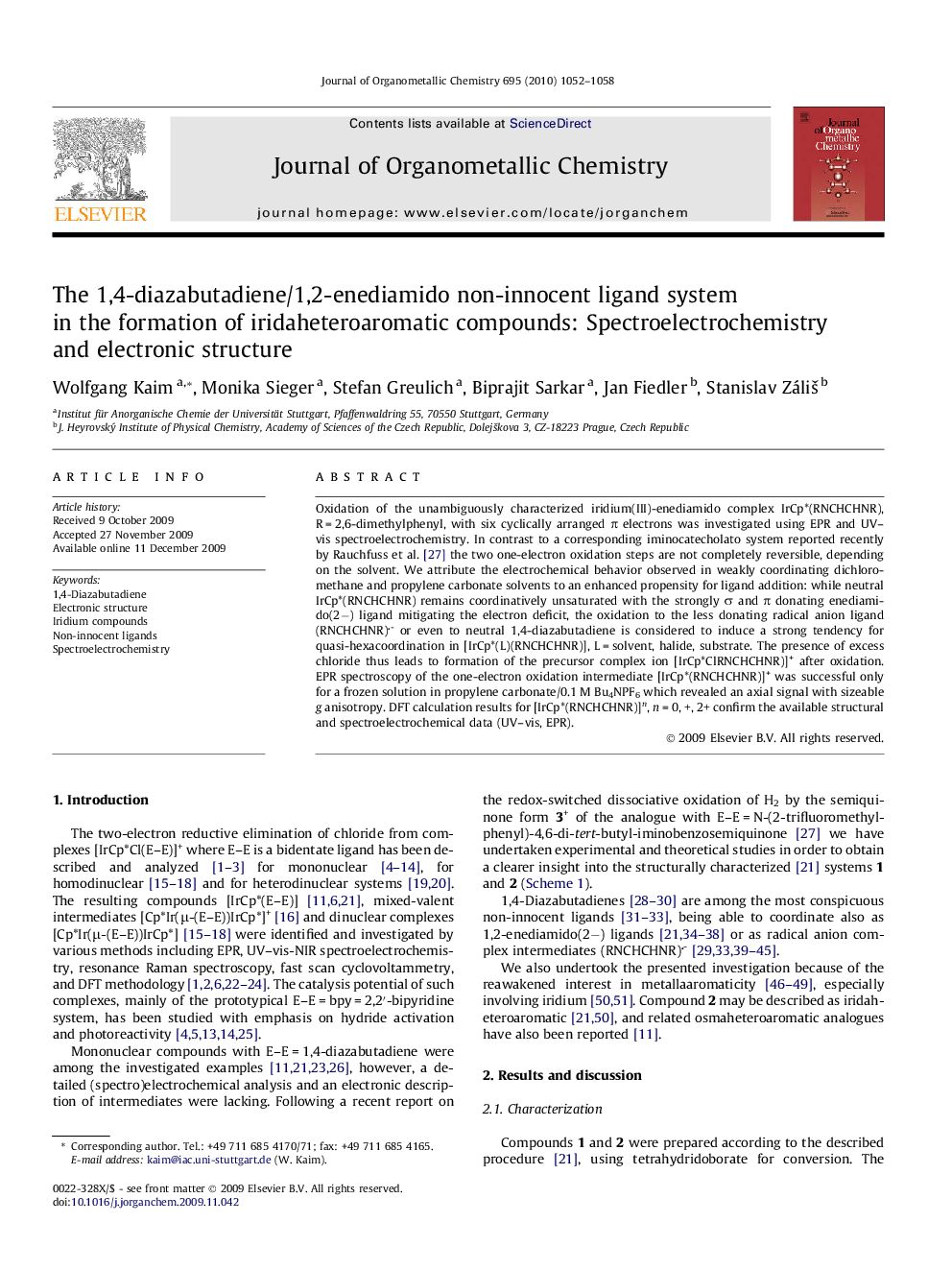| کد مقاله | کد نشریه | سال انتشار | مقاله انگلیسی | نسخه تمام متن |
|---|---|---|---|---|
| 1327033 | 977459 | 2010 | 7 صفحه PDF | دانلود رایگان |

Oxidation of the unambiguously characterized iridium(III)-enediamido complex IrCp∗(RNCHCHNR), R = 2,6-dimethylphenyl, with six cyclically arranged π electrons was investigated using EPR and UV–vis spectroelectrochemistry. In contrast to a corresponding iminocatecholato system reported recently by Rauchfuss et al. [27] the two one-electron oxidation steps are not completely reversible, depending on the solvent. We attribute the electrochemical behavior observed in weakly coordinating dichloromethane and propylene carbonate solvents to an enhanced propensity for ligand addition: while neutral IrCp∗(RNCHCHNR) remains coordinatively unsaturated with the strongly σ and π donating enediamido(2−) ligand mitigating the electron deficit, the oxidation to the less donating radical anion ligand (RNCHCHNR)- or even to neutral 1,4-diazabutadiene is considered to induce a strong tendency for quasi-hexacoordination in [IrCp∗(L)(RNCHCHNR)], L = solvent, halide, substrate. The presence of excess chloride thus leads to formation of the precursor complex ion [IrCp∗ClRNCHCHNR)]+ after oxidation. EPR spectroscopy of the one-electron oxidation intermediate [IrCp∗(RNCHCHNR)]+ was successful only for a frozen solution in propylene carbonate/0.1 M Bu4NPF6 which revealed an axial signal with sizeable g anisotropy. DFT calculation results for [IrCp∗(RNCHCHNR)]n, n = 0, +, 2+ confirm the available structural and spectroelectrochemical data (UV–vis, EPR).
One-electron oxidation of the coordinatively unsaturated enediamidoiridium(III) complex IrCp∗(RNCHCHNR), R = 2,6-dimethylphenyl, yielded a cationic species, both of which were characterized computationally (DFT, TD-DFT) and experimentally (EPR, UV–vis spectroelectrochemistry).Figure optionsDownload as PowerPoint slide
Journal: Journal of Organometallic Chemistry - Volume 695, Issue 7, 1 April 2010, Pages 1052–1058